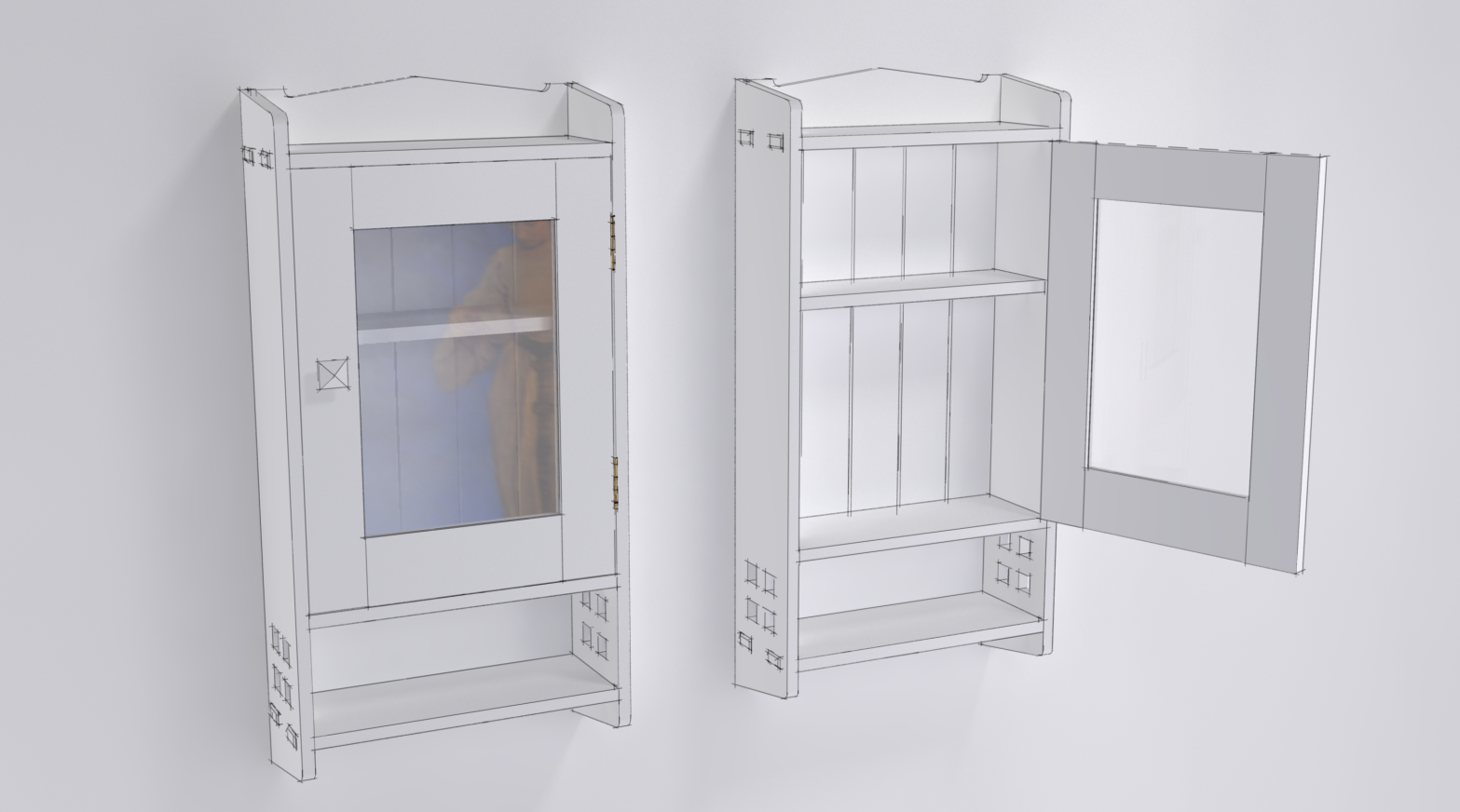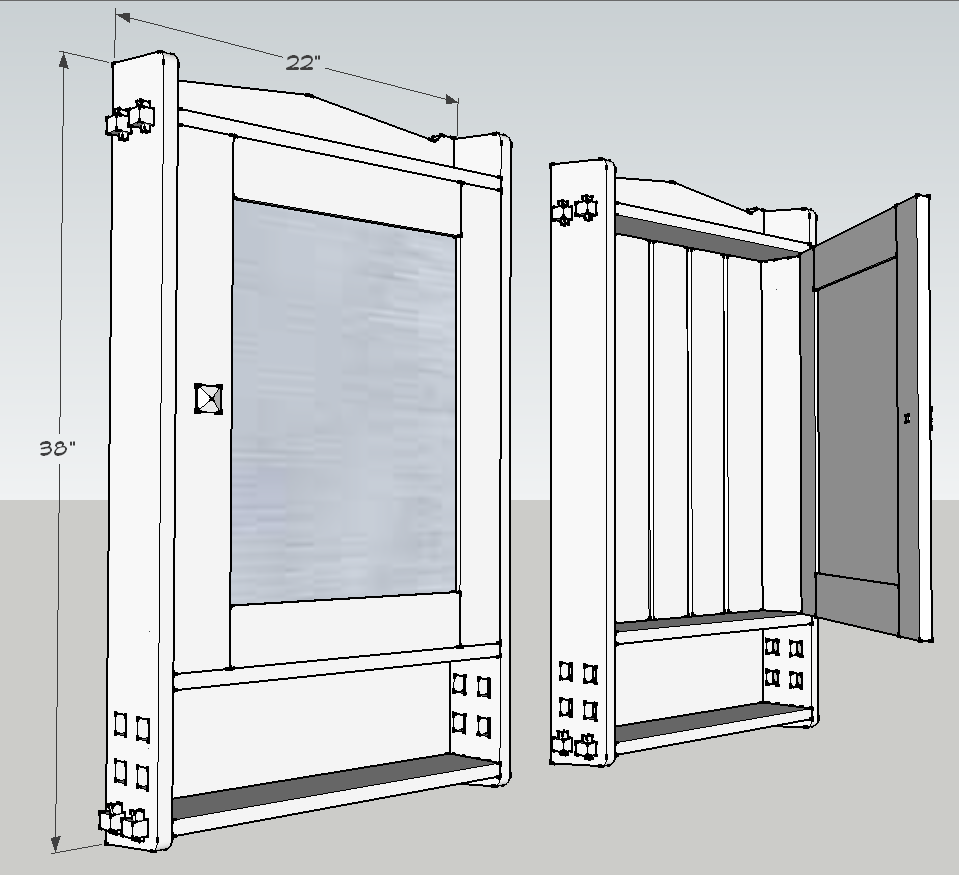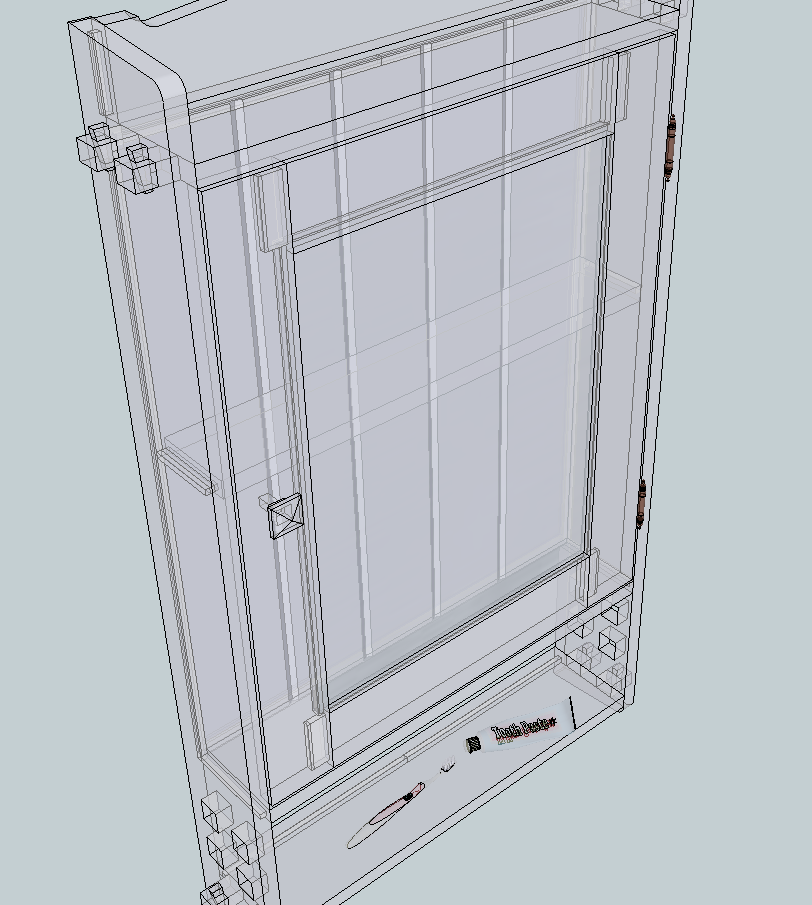A Little Wall Cabinet From the Early 1900s
-
I'm away from home and without my favorite woodworking tool, Sketchup.
But I'll be home soon, and will tackle this posthaste. I'm thinking of doing two different sizes, a mini and maxi, and will examine all the various choices in joinery, going for best practice, and foolproof machinery setups.
I've enough paint grade clear maple and heart birch for all the exposed parts, and for the v-joint inside back, there's some choice antique heart pine that will be clearcoated, and not painted like the rest.
Some chunks of qs white oak will be used for the knobs, with a stepped square shank, set through the door stile and wedged.
Some nice brass hinges with finials (from Whitechapel) should be a nice touch.
-
Fine example all around. So you would join the door with tenons?
Thanks for the component David! I want to check it out and might use it.
-
Peter, I would use tenons to join the door parts.
-
Well, I got rid of the wedges in the through tenons and shortened them up a bit. I also modified the door so the panel fits in a groove and I put a piece of glass in there.

Here it is without painted in white.

I need to figure out the how to make the glass nicer. I wanted a stronger reflection of its surface.
-
Dave,
Would it work to create a texture in Photoshop, setting the opacity to make it nearly transparent, then importing it into SketchUp? Or would the transparency disappear once it's imported?
Best,
dh -
David, you could do that if you save the texture image as a PNG. It won't have the same qualities as a reflection, even a rendered reflection but it could be done. It will tend to wash out materials behind and i think make those textures lighter instead of darker.
In the case of my textured image, I hid the panels in the textured image and overlaid the rendered image so the reflections would be there.
It might also be worth trying to make two separate image exports from SketchUp and laying one over the other. One image would be the textured image without the glass and the other would be similar to the white rendered image be without edges. So basically the reflection image applied to the class would be the only thing that shows.
-
A quick first shot at sizing and design. Now for some subtle tweaking, then the joinery.
The through-holes look like they need to be a little larger. Other things need work.

-
Nice. Maybe it is a trick of the light but your cabinet looks like it is a bit on the shallow side.
-
The inside depth is 3-1/2", which is 1/8" deeper than the Robern meds cab I have in the bathroom down the hall. I thought it was sufficient.

-
I'm sure it will be deep enough. What kind of wood will you make it out of?
-
It will be painted, except for the inside back, maybe the knob, and the pegs. Maple makes a good painted surface, and the local supply of "brown" maple (that not selected as clear all-sapwood) is plentiful and inexpensive.
The little pegs will be something dark, maybe walnut. Same for the knob. I've some nice old-growth heart pine pieces for making the grooved back, and it will be clearcoated.
-
Parts all mostly machined for a prototype. Done in eastern white pine. Through square holes are not easy. Very precise mark-out and scary sharp chisels required. May make router jig for doing it next time, then square corners with chisel and file.
Door rail tenons to be notched, top hanger rail needs to be shaped with bandsaw and cleaned up. Used full-size template print plug-in.
Am hoping it goes a little better in hardwood.
-
That's looking good, Gene. I wish I could get Eastern white pine that looks as nice.
For the hardwood version are you going to use white oak or something else?
Advertisement







